Environment and Ecology: July 2024 UPSC Current Affairs | Environment for UPSC CSE PDF Download
GHGs, Rainfall and Climate Change

Why in news?
A recent study has revealed that unprecedented increase in greenhouse gases can decrease rainfall in the equatorial region. This can further lead to replacement of India's biodiversity hotspots consisting of evergreen forests in Western Ghats, northeast India and the Andamans into deciduous forests.
What has the Recent Study Revealed?
About:
- The study pointed out the impacts of increased, specifically high levels of atmospheric carbon dioxide, on rainfall patterns and vegetation in equatorial regions.
- The study used fossil pollen (from Lignite Mine of Kutch) and carbon isotope data from the Eocene era 54 million years ago, a period of global warming.
- The study used data from deep time hyperthermal events that are considered potential analogs for future climate predictions.
Impact on Rainfall and Vegetation Shifts:
- During the Eocene era, when atmospheric CO2 concentrations exceeded 1000 parts per million by volume (ppmv) near the equator, there was a significant decrease in rainfall which led to increase in
Relevance to Current Climate Change:
- The study draws parallels between past climatic conditions (Eocene era) and potential future scenarios under increased greenhouse gas emissions.
- Insights from the study may contribute to strategies for mitigating the impacts of climate change on rainforests and other sensitive ecosystems.
What is Previous Evidence of Climate Change?
- Geological records document alternating periods of glacial and warmer inter-glacial phases.
- In the distant geological past, approximately 500-300 million years ago during the Cambrian, Ordovician, and Silurian periods, Earth's climate was notably Pleistocene epoch, the Earth underwent cycles of glaciation and interglacial periods, with the last major glacial peak occurring around 18,000 years ago. The current interglacial period began approximately 10,000 years ago.
- The most recent glacial period spanned from about 120,000 to 11,500 years ago. Since then, Earth has been in the interglacial period known as the Holocene epoch.
- In regions with high altitudes and latitudes, geological features and sediment deposits bear evidence of the advance and retreat of glaciers indicating fluctuations between warm and cold periods.
Indian Context:
- India also witnessed alternate wet and dry periods.
- Archaeological findings show that the Rajasthan desert experienced wet and cool climate 8,000 B.C.
- In the period 3,000-1,700 B.C. the region had higher rainfall after which the dry conditions prevailed.
Use of Green Funds for Road Works
 Why in news?
Why in news?
The Central Pollution Control Board (CPCB) has been using funds meant for tackling air pollution to finance road repairs and paving works. National Green Tribunal (NGT) has expressed concern over this diversion of funds, calling it potentially a "gross misuse and serious financial irregularity." In response to concerns about the effective spending of released funds and ongoing scrutiny from the NGT regarding inappropriate project allocations, the government is reviewing clean air action plans for 131 cities to speed up the use of funds allocated under the National Clean Air Programme(NCAP).
What is the Issue of CPCB's Use of Green Funds for Road Works?
Green Funds in Question:
- Environment Protection Charge (EPC): Collected as a 1% charge on diesel vehicles with an engine capacity of 2000 CC or above in Delhi-NCR, based on a 2016 Supreme Court order.
- Environment Compensation (EC): Collected from compensation imposed by the NGT and managed by CPCB.
These funds were created with the specific purpose of tackling air pollution and other environmental issues. However, their recent use for road works has led to legal scrutiny.
CPCB's Justification:
- The CPCB argues that road repairs and paving works directly contribute to reducing dust pollution, a significant contributor to poor air quality in urban areas.
- They claim this funding approach aligns with the National Clean Air Programme (NCAP) 2019, which adopts a convergence model for implementing clean air city action plans.
- The CPCB states that it uses these funds as gap funding for air quality improvement projects when they are not supported by other schemes.
- The CPCB has highlighted the case of funding allocated Rs 15.9 crore out of Rs 98.9 crore EPC funds to Ghaziabad Municipal Corporation for eight road projects, ensuring no other scheme funded these works. This allocation, approved by relevant committees, demonstrates CPCB's use of funds for road works to improve air quality.
NGT's Concerns and Scrutiny:
- NGT is concerned about potential misuse and financial irregularities in diverting air quality improvement funds to road repairs.
- If CPCB continues this practice, it may lead to other municipal bodies seeking similar allocations, raising fairness and fund utilization issues.
- NGT is yet to decide on the permissibility of using these funds; this decision will also impact the future use of funds by the CPCB and could influence policy decisions on environmental protection and infrastructure development projects.
- Additionally, the issue will be considered in the context of poor air quality in 53 cities, potentially linking it to wider air quality management strategies.
Launched in 2019:
- The NCAP aims to reduce particulate matter pollution by 40% by 2025-26 across 131 selected cities.
What are the Key Focus Areas for Review?
- Dust Control Measures: Cities will be urged to implement effective strategies for controlling dust pollution.
- Electric Vehicle Infrastructure: Setting up charging stations for electric vehicles to promote cleaner transport options.
- Public Transport Improvements: Enhancements in public transport systems to reduce vehicular emissions.
- Waste Management Practices: Effective waste management to prevent burning and other practices that contribute to air pollution.
- Urban Greening Initiatives: Increasing green cover to improve air quality and mitigate pollution.
What are the Key Facts About the Central Pollution Control Board?
- Establishment and Legal Framework: The CPCB is a statutory organization constituted in 1974 under the Water (Prevention and Control of Pollution) Act, 1974. It was further entrusted with functions under the Air (Prevention and Control of Pollution) Act, 1981. It also provides technical services to the Ministry of Environment and Forests under the Environment (Protection) Act, 1986.
- Principal Functions: Water Pollution: Promote cleanliness of streams and wells by preventing, controlling, and abating water pollution. Air Pollution: Improve air quality by preventing, controlling, or abating air pollution in the country.
- Air Quality Monitoring: National Air Monitoring Programme (NAMP) established to determine air quality status and trends, control pollution from various sources, and provide data for industrial siting and town planning.
- Monitoring Station: Automatic monitoring station at ITO Intersection in New Delhi regularly monitors: Respirable Suspended Particulate Matter (RSPM), Carbon Monoxide (CO), Ozone (O), Sulphur Dioxide (SO), Nitrogen Dioxide (NO), and Suspended Particulate Matter (SPM).
- Water Quality Monitoring: The Water (Prevention and Control of Pollution) Act, 1974 aims to maintain and restore the wholesomeness of water bodies. CPCB collects, collates, and disseminates technical and statistical data related to water pollution.
Mains Question
Explain the concerns raised by the National Green Tribunal regarding the use of environmental funds for other works by the CPCB. How does this issue highlight challenges in financial management of environmental projects?
UNESCO Warns of 90% Soil Degradation by 2050

Why in News?
Recently, at an international conference in Agadir, Morocco, United Nations Educational, Scientific and Cultural Organization (UNESCO) Director-General urged its 194 Member States to improve soil protection and rehabilitation as the organisation warns that by 2050, up to 90% of the planet's soil could be degraded. This alarming prediction highlights a major threat to global biodiversity and human life.
What are UNESCO's Insights on Global Soil Degradation?
- Current State of Soil Degradation: According to the World Atlas of Desertification, 75% of soils are already degraded, directly affecting 3.2 billion people. The current trend may increase the impact to 90% by 2050.
- World Soil Health Index: UNESCO will establish a 'world soil health index' with international partners to standardise soil quality measurement and comparison. This will help identify trends in degradation or improvement and vulnerable areas, aiming to improve the evaluation of soil management practices.
- Pilot Programme for Sustainable Soil Management: UNESCO will launch a pilot programme for sustainable soil and landscape management in ten natural sites supported by its Biosphere Reserves Programme. The program aims to assess and improve management methods and promote best practices worldwide.
- Training Programs: UNESCO will train member government agencies, indigenous communities, and conservation organisations to access soil-protection tools.
What is Soil Degradation?
- Definition: Soil degradation is defined as a change in soil health status resulting in a diminished capacity of the ecosystem to provide goods and services for its beneficiaries. It involves biological, chemical, and physical decline in soil quality.
- Causes: Soil degradation can be caused by various factors such as physical factors like rainfall, surface runoff, floods, wind erosion, and tillage. Biological factors include human and plant activities that reduce soil quality, while chemical factors involve nutrient reduction due to alkalinity, acidity, or waterlogging.
- Impact: Degraded soils lead to reduced food production, heightened food insecurity, and diminished ecosystem services. Soil degradation is also a significant environmental issue affecting climate change mitigation and resilience due to its impact on carbon stocks.
What are the Initiatives Related to Management of Soil?
Global:
- Global Soil Partnership (GSP): The GSP, established in 2012, aims to prioritise soils in the global agenda and promote sustainable soil management. Hosted by the Food and Agriculture Organization (FAO) of the United Nations, the Partnership strives to enhance soil governance for productive soils, ensuring food security, climate change adaptation and mitigation, and sustainable development for all.
- World Soil Day: It is celebrated annually on 5 December to raise awareness about the importance of healthy soil and promote sustainable soil management. It was officially adopted by the UN General Assembly in 2013, designating 5 December 2014 as the first official World Soil Day.
- Bonn Challenge: It is a global goal to bring 150 million hectares of degraded and deforested landscapes into restoration by 2020 and 350 million hectares by 2030. It was launched by the Government of Germany and International Union for Conservation of Nature (IUCN) in 2011. The Challenge surpassed the 150-million-hectare milestone for pledges in 2017.
- Land Degradation Neutrality (LDN): It is a goal of the UNCCD (United Nations Convention to Combat Desertification) to stop and reverse land degradation by 2030. LDN is defined as a state where the amount and quality of land resources are stable or increasing, within specific time and space, and support ecosystems, food security, and human well-being.
India:
- Soil Health Management under National Mission for Sustainable Agriculture (NMSA)
- Soil Health Card Scheme
- Paramparagat Krishi Vikas Yojana (PKVY)
- Sub-Mission on Agroforestry (SMAF) Scheme
Way Forward
- Regenerative Agriculture: Focus on restoring soil health through practices like crop rotation, cover cropping, and reduced tillage. These methods enhance soil organic matter, improve water retention, and increase biodiversity.
- Develop and use biochar, compost, and other organic amendments: Improve soil structure and fertility.
- Promote Agroforestry: Integrate trees and shrubs into agricultural landscapes to prevent soil erosion and enhance soil fertility.
- Assessment and Mapping: Create a global database on standardising soil health monitoring to allow for better tracking of progress and facilitate targeted interventions.
- Green Infrastructure: Integrate green roofs, bioswales, and urban parks into city planning to allow rainwater infiltration, reduce runoff, and create pockets of healthy soil.
- Reclaim and remediate abandoned industrial sites: Use them for urban agriculture or green spaces to promote soil regeneration.
- Bioremediation: Utilize microbes and plants to break down or neutralize contaminants in polluted soils for natural soil healing.
- Phytomining: Explore the use of specific plants that can absorb and accumulate metals from contaminated soils, offering a natural remediation approach.
NTCA's Plan on Relocation of Villages
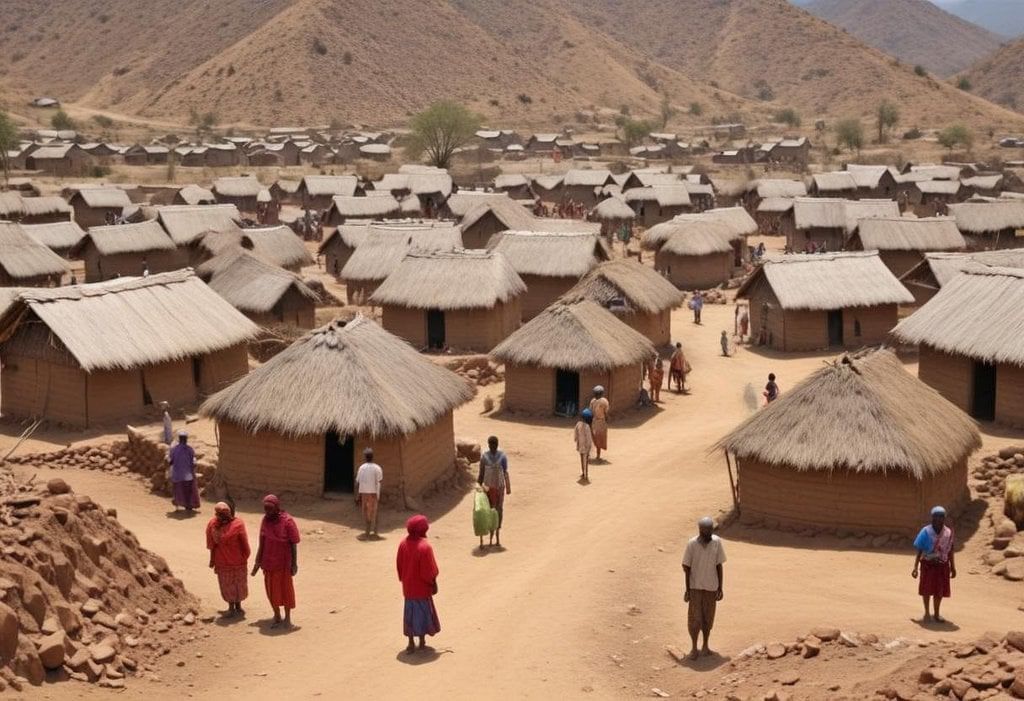 Why in News?
Why in News?
Recently, the National Tiger Conservation Authority (NTCA) has urged state wildlife departments to develop a comprehensive timeline and action plan for the relocation of villages situated within the core tiger habitats.
What is NTCA's Villages Relocation Plan?
- About Core Areas:
- Wildlife Protection (Amendment) Act, 2006 emphasizes the need for undisturbed areas to support viable tiger breeding populations.
- Core or critical tiger habitats refer to areas within tiger reserves that are kept untouched to ensure the survival of breeding tiger populations.
- The NTCA's focus is on the 55 notified core areas in India, where approximately 600 villages (64,801 families) currently reside within.
- Voluntary Village Relocation Program (VVRP):
- Twin Objectives of VVRP The program aims to empower local communities by providing access to development opportunities and creating inviolate space for tigers to coexist harmoniously.
- Relocations must be voluntary and based on the informed consent of gram sabhas and families involved. Forest rights of Scheduled Tribes and other forest dwellers must be recognized and settled.
- Compensation:
- Options for Families Families can choose between financial compensation (Rs 15 lakh per family) or a resettlement package that includes land, housing, and basic amenities.
- Issues With Relocation Plan:
- Shortcomings in NTCA's Plan The NTCA's relocation package does not meet the legal standards set by the Land Acquisition Act, 2013, which has special provisions for providing resettlement and rehabilitation to ST communities and forest dwellers.
Decarbonizing MSME and Energy Sector

Why in news?
Recently, a study on decarbonisation of 7 clusters (Alathur, Asansol-Chirkunda, Bengaluru, Delhi-NCR, Coimbatore, Ludhiana and Tiruppur) has revealed that adopting renewable energy solutions and energy efficient measures could lead to significant annual savings and reduction in emissions of CO2. It covered sectors such as pharmaceuticals, refractories, aluminium die-casting, bakeries, textiles units across these clusters.
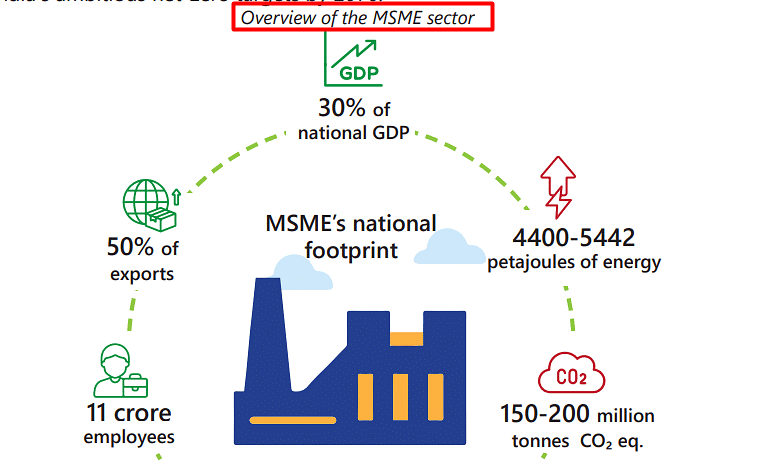
What are the Key Findings of the Study on MSMEs?
Key Findings:
- MSME Energy Consumption
Approximately 31% of MSME are in the manufacturing sector, contributing 20%-25% of the country's industrial energy use. - Over 80% of this energy is needed for thermal processes such as heating in boilers and furnaces.
- Initial Investment & Cost Saving:
- Adopting energy efficient measures, renewable energy solutions in 7 key clusters would require investment of Rs 90 crore and this could annually lead to cost savings of Rs 37 crore.
- Emission Reduction: Decarbonising these sectors would also lead to reduction of 1,36,581 tonnes of CO2 emissions.
Recommendations:
- Improve Access to Finance: Offer affordable, collateral-free financing for MSMEs by reviewing loan eligibility, building capacity for financial institutions, and exploring carbon financing options.
- Tailor MSME Policies: Set emission reduction targets, support energy audits, R&D, pilots, and financing for energy efficiency and renewable energy.
- Develop Biofuel Ecosystem: Expand biomass policies, include biodiesel in government schemes, and facilitate bio-CNG sales.
- Increase Renewable Energy Use: Promote rooftop solar and open-access systems by rationalising charges, aggregating demand, and utilising cluster development schemes.
- Regulatory Incentives: Provide incentives for MSMEs to switch to cleaner fuels, simplify clean fuel adoption, and monitor Scope 3 emissions.
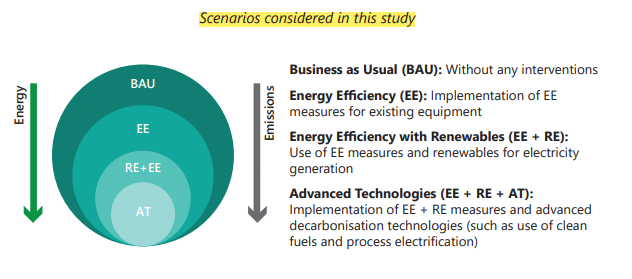
Mains Question
Discuss how decarbonization and energy transition can support the growth and development of the MSME sector in India. Analyse the challenges for MSMEs in adopting clean energy technologies and transitioning towards a low-carbon economy.
UNESCO Designates 11 New Biosphere Reserves

Why in news?
Recently, UNESCO has approved the designation of 11 new Biosphere Reserves (BR) in 11 countries. The World Network of Biosphere Reserves now comprises 759 sites across 136 countries.
What are the New Additions to the UNESCO Biosphere Reserve List?
- Kempen-Broek Transboundary Biosphere Reserve (Belgium, Kingdom of the Netherlands)
- Darién Norte Chocoano Biosphere Reserve (Colombia)
- Madre de las Aguas Biosphere Reserve (Dominican Republic)
- Niumi Biosphere Reserve (Gambia)
- Colli Euganei Biosphere Reserve (Italy)
- Julian Alps Transboundary Biosphere Reserve (Italy, Slovenia)
- Khar Us Lake Biosphere Reserve (Mongolia)
- Apayaos Biosphere Reserve (Philippines)
- Changnyeong Biosphere Reserve (Republic of Korea)
- Val d'Aran Biosphere Reserve (Spain)
- Irati Biosphere Reserve (Spain)
What is a Biosphere Reserve?
It is an international designation by the United Nations Educational, Scientific and Cultural Organization (UNESCO) for representative parts of natural and cultural landscapes extending over a large area of terrestrial or coastal/marine ecosystems or a combination of both. Biosphere Reserves aim to balance economic and social development, maintenance of associated cultural values, and the preservation of nature.
Criteria for Designation of BR
- A site must contain a protected and minimally disturbed core area of value of nature conservation.
- The core area must be a bio-geographical unit and should be large enough to sustain a viable population representing all trophic levels.
- Involvement of local communities and use of their knowledge in biodiversity preservation.
- Area's potential for the preservation of traditional tribal or rural modes of living for harmonious use of the environment.
Conservation
- Managing Biosphere Reserve’s genetic resources, endemic species, ecosystems, and landscapes.
- Protection of wildlife, culture, and customs of tribals.
Development
- Promoting sustainable economic and human growth on a sociocultural and ecological level.
- Strengthening the three pillars of sustainable development: social, economic, and environmental protection.
Functions of BR
- Logistic support: research activities, environmental education, training, and monitoring.
What is the Biosphere Reserve Project?
The Government of India initiated the Biosphere Reserve scheme in 1986 under the UNESCO MAB programme to provide financial assistance for the maintenance, improvement, and development of biosphere reserves.
What are the 3 Zones of Biosphere Reserve?
- Core: Most protected area, free from human interference.
- Buffer Zone: Surrounds the core zone and supports its protection.
- Transition Zone: Outermost part for human ventures and conservation.
What are the Biosphere Reserves in India?

What is the International Status of Biosphere Reserve?
UNESCO introduced the designation 'Biosphere Reserve' to minimize conflict between development and conservation. There are about 275 million people living in biosphere reserves worldwide.
Mains Question
What is a Biosphere Reserve? Critically examine the role of Biosphere Reserves in biodiversity conservation and sustainable development in India. Suggest measures to improve their effectiveness.
Air Pollution and Mortality in Indian Cities
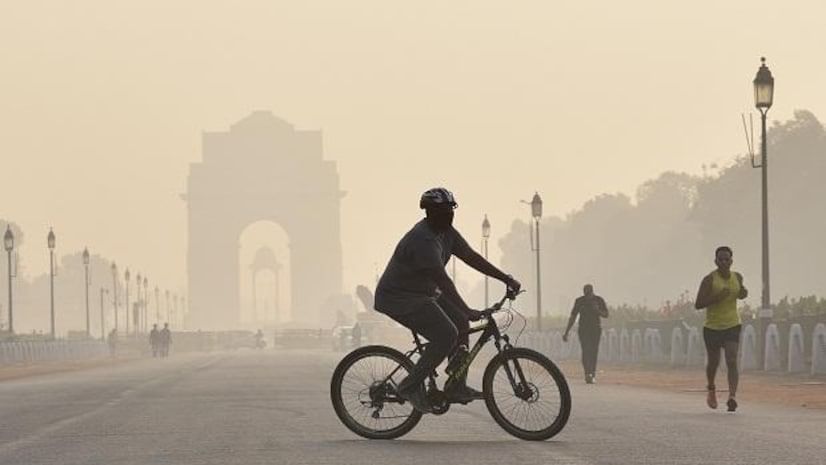
Why in news?
Recently, Lancet has published a first multi-city study examining the relationship between short-term air pollution (PM2.5) exposure and mortality in 10 major cities of India between 2008 and 2019.
What are the Key findings of the Study?
- Air Pollution Causing Death: The study revealed that over 33,000 deaths (approximately 7.2% of total mortalities) could be attributed to air pollution annually across the 10 investigated cities.
- Highest Mortality Burden: Delhi exhibited the most severe air pollution, with a staggering 11.5% (12,000 deaths) of annual deaths linked to air pollution.
- Shimla Lowest Mortality: Shimla emerged as the city with the lowest mortality burden attributable to air pollution, with only 59 deaths (constituting 3.7% of total deaths) annually.
- Chronic Exceedance of Safe Air Quality Standards: There has been a persistent violation of established air quality standards, with concentrations consistently exceeding the World Health Organization's safe limit (15 µg/m³) on an alarming 99.8% of the days analyzed.
- Deteriorating Health with Increasing Pollution Levels: Every 10 µg/m³ increase in PM2.5 concentration resulted in a 1.42% rise in mortality across the ten cities.
- Cities with comparatively lower pollution levels, such as Bengaluru and Shimla, exhibited a heightened susceptibility to mortality increases with even incremental rises in PM2.5 concentrations.
NITI Aayog Panel for Net-Zero Goal
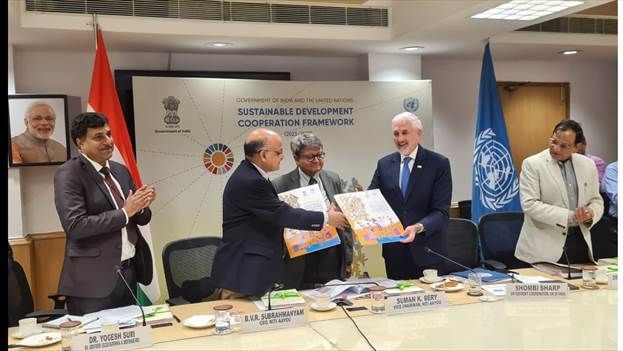
Why in News?
Recently, NITI Aayog has formed dedicated multi-sectoral committees to prepare a policy design and create a roadmap for achieving its goal of becoming a net-zero economy by 2070. This initiative comes 3 years after India declared its intention to become a net-zero economy by 2070.
Key Focus Areas of the Working Groups Formed by the NITI Aayog
About:
- NITI Aayog has established 6 working groups focusing on key sectors.
- Sectoral committees will be set up for transport, industry, buildings, power, and agriculture.
The 6 Net-Zero Working Groups
- Macroeconomic Implications: Examine implications on macroeconomic indicators.
- Climate Finance: Assess India's needs for mitigation.
- Critical Minerals: Focus on research and development.
- Social Aspects of Energy Transition: Evaluate social impacts.
- Policy Synthesis: Compile reports of sectoral committees.
- Sectoral Committees: Develop transition pathways for various sectors.
Expected Outcomes
- Deadline for action plans submission is October 2024.
- The NITI Aayog report will serve as a policy handbook for central ministries.
Net-Zero Target
- Net Zero aims for equilibrium between carbon emissions produced and removed.
- Enhancing carbon sinks like forests can help increase emissions absorption.
- Technologies like carbon capture and storage play a pivotal role.
- Over 70 countries have pledged to reach this goal by 2050.
India’s Initiatives to Achieve Net Zero Target
National Action Plan on Climate Change aims to raise awareness about climate change threats and countermeasures among various stakeholders. India pledged to achieve net zero emissions by 2070 at the COP-26 Glasgow Summit. The 'Panchamitra' climate action plan outlines specific targets related to non-fossil energy capacity, renewable energy, carbon emissions reduction, economy's carbon intensity, and achieving net zero emissions.
Steps to Achieve Net-Zero Emission Target in India
Enhancing Carbon Sequestration:
- Expanding forest and tree cover, restoring degraded lands, promoting agroforestry, and adopting low-carbon farming practices can enhance carbon sequestration. This not only offsets emissions but also provides additional benefits like biodiversity conservation and improved soil fertility.
Building Climate Resilience:
- Enhancing disaster management systems, improving early warning and forecasting capabilities, investing in climate-proof infrastructure, and implementing climate-smart agriculture can bolster India's climate resilience.
- Driving India's Green Transportation Revolution:
- Promoting electric vehicles, establishing a robust charging infrastructure, and introducing innovative public transportation solutions can reduce emissions and congestion.
Climate Smart Agriculture:
- Promoting organic farming, agroforestry, and precision agriculture, while integrating technology-driven solutions like remote sensing and IoT devices, can optimize resource utilization and enhance crop productivity.
- International Collaboration:
- Acquiring advanced clean technologies through technology transfer agreements, securing international climate finance, and sharing best practices with other developing countries can facilitate India's journey towards achieving net zero emissions.
Mains Question
Discuss India's commitment to achieving net zero emissions by 2070 and elaborate on the key policy measures and implications of this pledge for India's sustainable development priorities.
New Species of Plants and Animals Discovered
Why in News?Recently, in 2023, India witnessed significant advancements in its Biodiversity knowledge with the addition of numerous animal and plant species to its faunal and floral databases. The findings were compiled in two publications:
"Animal Discoveries 2023" by the Zoological Survey of India (ZSI)
"Plant Discoveries 2023" Botanical Survey of India (BSI).
What are the Major Additions in India's Faunal and Floral Database?
Faunal Discoveries:
- India added 641 new species to the fauna database in 2023, including 442 entirely new species and 199 species which have been newly recorded in the country.
Significant Animal Discoveries Include:
- Capra Himalayensis which proves that the Himalayan Ibex, distributed in the trans-Himalayan ranges of Jammu and Kashmir, Ladakh, and Himachal Pradesh, is a distinct species from the Siberian Ibex
- Miniopterus Srinii, a new species of bent-winged bat, was also found in the Kodagu district of Karnataka.
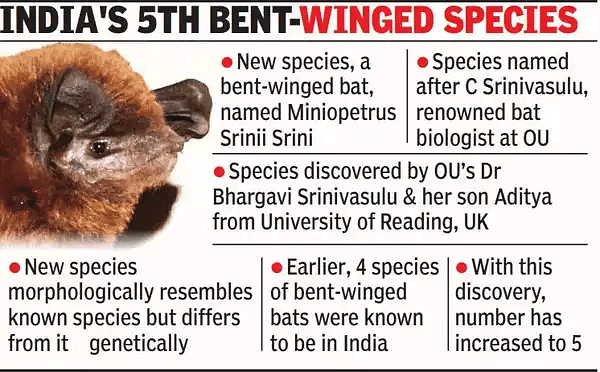
- Kerala recorded the highest number of animal discoveries, with 74 completely new species and 27 new records. It was followed by West Bengal (72 new species) and Tamil Nadu (64).
- Invertebrates accounted for the majority of new faunal discoveries with 564 new species, while vertebrates constituted 77 species.
- Insects (with 369 species) comprised the largest group among invertebrates, and fish (with 47 species) dominated among vertebrates.
- Reptiles, Amphibia, Mammals, and least with Aves.
Floral Discoveries:
- In 2023, India also added 339 taxa to its plant database, including 326 species and 13 infraspecific taxa. Of these, 171 taxa are new and 168 taxa are new distributional records from India.
- Taxa can refer to a sub-species or variety of plant species.
- Assam recorded the highest number of new plant discoveries, followed by Uttarakhand.
- The discovery includes 106 angiosperms, 2 Pteridophytes, 16 Bryophytes, 44 lichens, 111 fungi, 50 algae, and 10 microbes.
- New discoveries include wild relatives of many potential horticultural, agricultural, medicinal, ornamental plants like begonias, impatiens, legumes, zingibers, orchids.
- Western Ghats and North Eastern Regions were the hotspot regions contributing to 14% of total discoveries.
- New Plant Discoveries:
- Curcuma kakchingense is a new species of turmeric found in Manipur's Kakching.
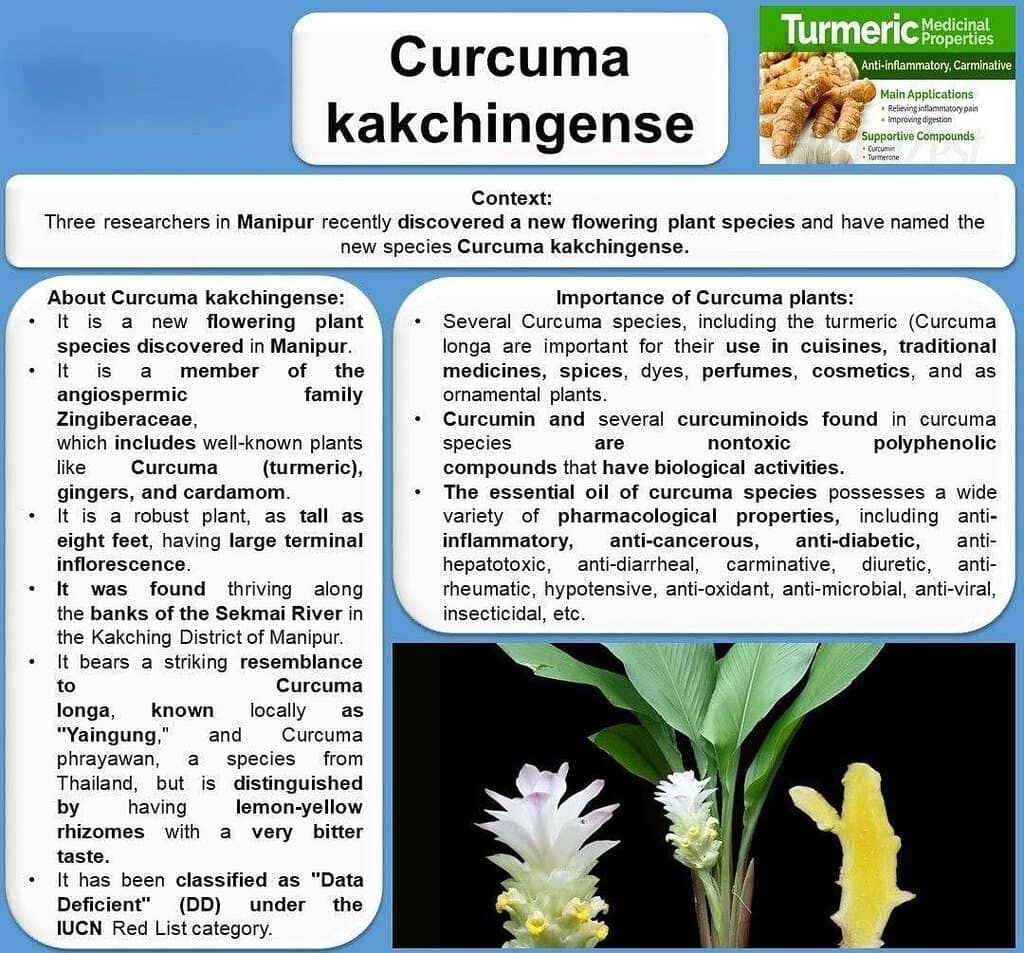
- Asystasia Venui flowering plant discovered in the Acharya Jagadish Chandra Bose Indian Botanic Garden at Howrah in West Bengal.
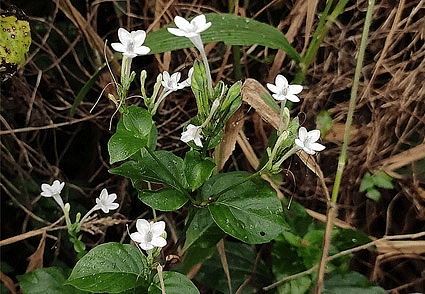
Mains Question
Discuss the various threats to biodiversity and examine the role of international agreements and national policies in promoting biodiversity conservation in India.
Global Soil Partnership's 12th Plenary Assembly
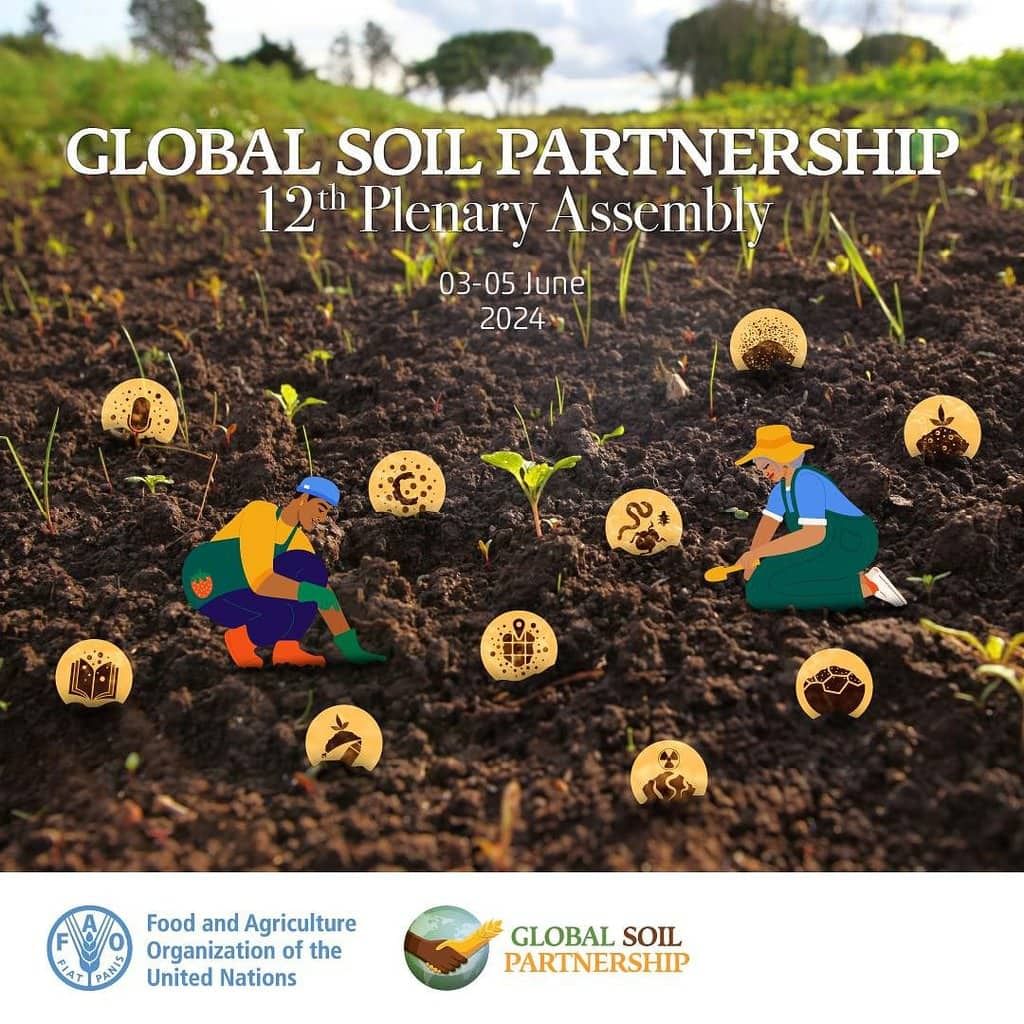 Why in news?
Why in news?
The Global Soil Partnership (GSP), founded in December 2012, aims to elevate soil issues on the global agenda and advocate for inclusive policies and better soil governance. Recently, it held its 12th Plenary Assembly, emphasizing the need for immediate action in the face of global challenges.
Key Initiatives of GSP
- VACS Initiative:
Under the VACS initiative, FAO is executing the Soil Mapping for Resilient Agrifood Systems (SoilFER) project in Central America and African countries. - Other Initiatives:
- Measuring, Reporting, and Verifying soil health
- Global Soil Laboratory Network quality certificates
- Conservation Agriculture
- The role of healthy soils in agrifood systems transformation
- Achievements
- Implementing World Soil Day (5th December)
- Observing International Year of Soils in 2015
- Revision of the World Soil Charter
30 Years of UNCCD
 United Nations Convention to Combat Desertification (UNCCD)
United Nations Convention to Combat Desertification (UNCCD)
- UNCCD is a Convention to combat desertification and mitigate the effects of drought through national action programs that incorporate long-term strategies supported by international cooperation and partnership arrangements.
- The Convention, the only convention stemming from a direct recommendation of the Rio Conference\u2019s Agenda 21, was adopted in Paris, France, on 17 June 1994 and entered into force in December 1996.
- It is the only internationally legally binding framework set up to address the problem of desertification.
- The Convention is based on the principles of participation, partnership, and decentralization—the backbone of good governance and sustainable development.
- It has 197 parties, making it near universal in reach.
- The Holy See (Vatican City) is the only state that is not a party to the convention that is eligible to accede to it.
- To help publicize the Convention, 2006 was declared International Year of Deserts and Desertification, but debates have ensued regarding how effective the International Year was in practice.
Secretariat:
- It has been located in Bonn, Germany, since January 1999, and moved from its first Bonn address in Haus Carstanjen to the new UN Campus (NewYork, USA) in July 2006.
Agenda 21:
- Agenda 21 is a non-binding action plan of the United Nations with regard to sustainable development.
- It is a product of the Earth Summit (UN Conference on Environment and Development) held in Rio de Janeiro, Brazil, in 1992.
- It is an action agenda for the UN, other multilateral organizations, and individual governments around the world that can be executed at local, national, and global levels.
- One major objective of the Agenda 21 initiative is that every local government should draw its own local Agenda 21.
- Its aim initially was to achieve global sustainable development by 2000, with the "21" in Agenda 21 referring to the original target of the 21st century.
Flagship initiatives of UNCCD

- Land Degradation Neutrality (LDN)
- UNCCD defines LDN as “a state whereby the amount and quality of land resources necessary to support ecosystem functions and services to enhance food security remain stable, or increase, within specified temporal and spatial scales and ecosystems.”
- The impacts of land degradation will be felt by most of the world’s population. Land degradation also changes and disrupts rainfall patterns, exacerbates extreme weather like droughts or floods, and drives further climate change. It results in social and political instability, which drives poverty, conflict, and migration.
- Achieving LDN requires three concurrent actions:
- avoiding new degradation of land by maintaining existing healthy land;
- reducing existing degradation by adopting sustainable land management practices that can slow degradation while increasing biodiversity, soil health, and food production; and
- ramping up efforts to restore and return degraded lands to a natural or more productive state.
- The UNCCD’s objectives for LDN include:
- maintaining or improving the sustainable delivery of ecosystem services
- maintaining or improving land productivity to enhance global food security
- Increasing the resilience of land and the populations dependent on it
- seeking synergies with other social, economic, and environmental objectives
- reinforcing and promoting responsible and inclusive land governance
- India’s Efforts to Check Land Degradation
- India is focusing on sustainable land and resource management for livelihood generation at the community level to make the local lands healthier and more productive for providing a better homeland and a better future for its inhabitants.
- The National Action Programme for combating desertification was prepared in 2001 to take appropriate action in addressing the problems of desertification.
- Following the global call for the submission of nominations for World Restoration Flagships, India endorsed six restoration flagships that target the restoration of 12.5 million hectares of degraded land.
- Some of the major programmes which address issues related to land degradation and desertification, being implemented currently are as follows:
- Integrated Watershed Management Programme (IWMP) (Pradhan Mantri Krishi Sinchayee Yojana)
- National Afforestation Programme (NAP)
- National Mission for Green India (GIM)
- The Mahatma Gandhi National Rural Employment Guarantee Scheme (MGNREGS)
- Soil Conservation in the Catchment of River Valley Project
- National Watershed Development Project for Rainfed Areas (NWDPRA)
- Fodder and Feed Development Scheme-component of Grassland Development including Grass Reserves
- Command Area Development and Water Management (CADWM) programme
- Soil Health Card Scheme, etc.
|
95 videos|234 docs|52 tests
|
FAQs on Environment and Ecology: July 2024 UPSC Current Affairs - Environment for UPSC CSE
| 1. How are Green Funds being utilized for road works in the context of environmental conservation and climate change mitigation? |  |
| 2. What is the significance of UNESCO's warning regarding soil degradation by 2050, and what measures can be taken to address this issue? |  |
| 3. How does the NTCA plan to relocate villages in the context of wildlife conservation and human-wildlife conflict mitigation? |  |
| 4. What is the significance of decarbonizing MSMEs and the energy sector in achieving climate change mitigation goals? |  |
| 5. How does UNESCO's designation of 11 new Biosphere Reserves contribute to biodiversity conservation and sustainable development efforts globally? |  |
















